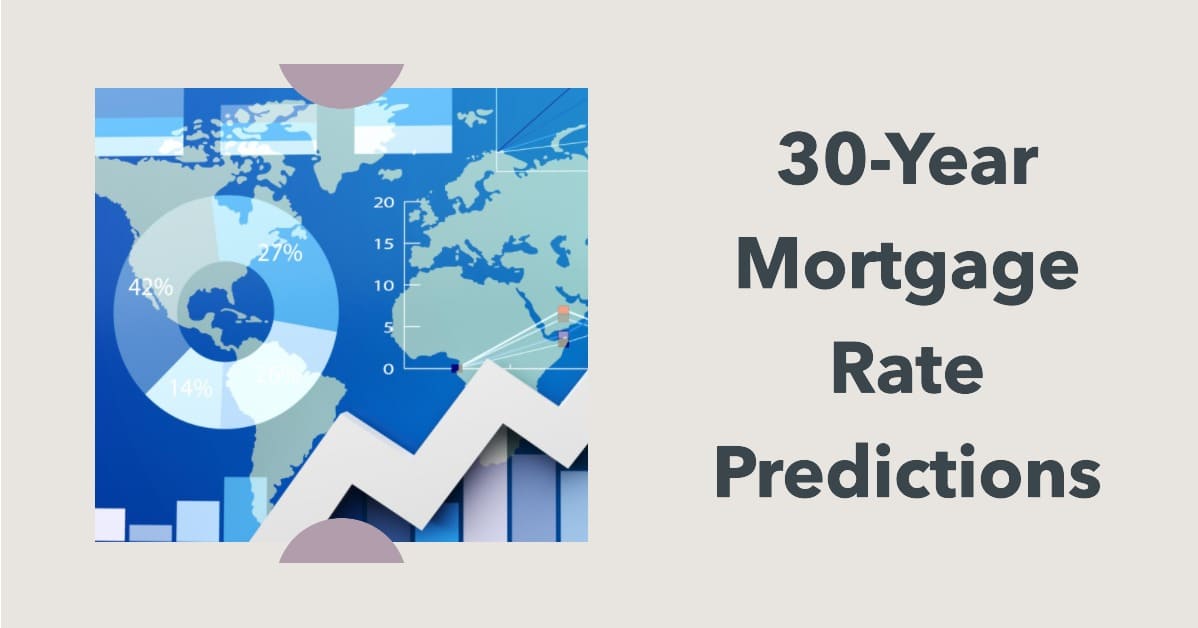
If you are planning to buy a home or refinance your existing mortgage, understanding the future of 30-year mortgage rates is crucial. Predicting whether they will rise or fall and how much they will impact your monthly payments and overall affordability is a significant concern. In this blog post, we will delve into the factors that influence 30-year mortgage rates and explore expert predictions for the upcoming months and years.
30-Year Mortgage Rate Predictions from Reputable Sources
Forecasts regarding mortgage rates for the remainder of 2023 and 2024 vary among reputable sources. Here are predictions from two significant entities:
Fannie Mae
Fannie Mae, a government-sponsored enterprise, predicts that the average 30-year fixed rate will be approximately 6.8% during the third quarter of 2023, slightly decreasing to 6.7% by year-end. The projection suggests that rates may not dip below 6% until 2025. On average, Fannie Mae anticipates mortgage rates to be around 6.6% in 2023 and 6.3% in 2024.
Freddie Mac
Freddie Mac, another government-sponsored enterprise, reports that the average 30-year fixed rate is expected to rise to 7.5% by the end of 2023 and further increase to 8% by the end of 2024, according to their September forecast.
Recent Trends Affecting Mortgage Rates
Several recent trends have contributed to the rise in mortgage rates, such as:
- Strong Economic Recovery: The robust recovery from the COVID-19 pandemic has stimulated consumer spending, business activity, job creation, and income growth, resulting in increased demand for credit and the risk of overheating and inflation.
- Rising Demand for Housing: The demand for housing has surpassed the supply, driving home prices to record levels. This situation has created a seller’s market, where buyers compete for limited listings and offer higher prices, leading to an increased demand for mortgages and the cost of borrowing.
- Global Market Developments: Factors such as ongoing trade tensions, political instability in various regions, and environmental challenges due to climate change affect investor confidence, influencing exchange rates and interest rates across countries.
Factors Influencing 30-Year Mortgage Rates
If you are planning to buy a house and need a loan, you might be interested in knowing what are the factors that affect 30-year mortgage rates. Mortgage rates are the interest rates that lenders charge borrowers for lending them money to buy a property.
The longer the term of the loan, the higher the interest rate, because lenders face more risk and uncertainty. There are many factors that influence 30-year mortgage rates, but some of the most important ones are:
1. The Federal Reserve:
The Fed is the central bank of the United States, and it sets the federal funds rate, which is the interest rate that banks charge each other for overnight loans. The federal funds rate affects the prime rate, which is the interest rate that banks charge their most creditworthy customers. The prime rate, in turn, affects the mortgage rates that lenders offer to borrowers.
When the Fed lowers the federal funds rate, it stimulates the economy by making borrowing cheaper. This can lead to lower mortgage rates, as lenders compete for customers. Conversely, when the Fed raises the federal funds rate, it slows down the economy by making borrowing more expensive. This can lead to higher mortgage rates, as lenders try to protect their profit margins.
2. The Economy
The state of the economy also affects 30-year mortgage rates, as it reflects the supply and demand for credit. When the economy is strong, more people have jobs and income, and they are more likely to buy houses and apply for mortgages.
This increases the demand for credit, which pushes up the mortgage rates, as lenders have more bargaining power. On the other hand, when the economy is weak, fewer people have jobs and income, and they are less likely to buy houses and apply for mortgages. This decreases the demand for credit, which pulls down the mortgage rates, as lenders have less bargaining power.
3. The Inflation
Inflation is the general increase in the prices of goods and services over time. It erodes the purchasing power of money, which means that a dollar today can buy less than a dollar tomorrow.
Lenders are aware of this, and they adjust their mortgage rates accordingly. When inflation is high, lenders charge higher mortgage rates, because they want to compensate for the loss of value of their money over time.
When inflation is low, lenders charge lower mortgage rates, because they expect their money to retain its value over time.
4. The Credit Score
The credit score is a numerical representation of a borrower’s creditworthiness, based on their past payment history, debt level, income, and other factors. It ranges from 300 to 850, with higher scores indicating lower risk.
Lenders use credit scores to assess how likely a borrower is to repay their loan on time and in full. Borrowers with higher credit scores are more likely to qualify for lower mortgage rates because they pose less risk to lenders. Borrowers with lower credit scores are more likely to qualify for higher mortgage rates because they pose more risk to lenders.



